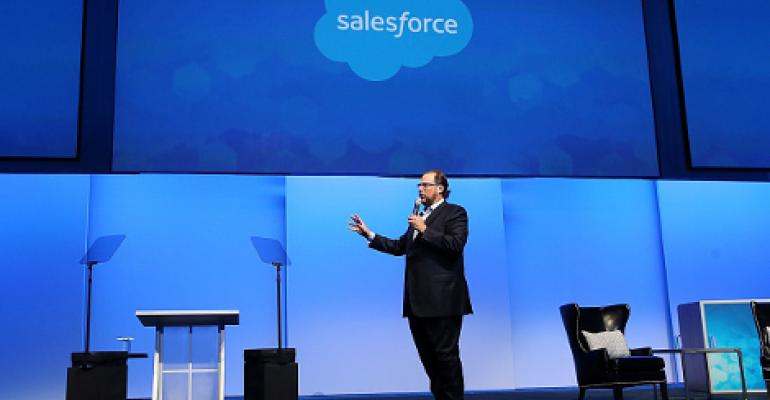This article originally ran at Talkin’ Cloud
At the Dreamforce 2015 conference this week Salesforce unfurled Salesforce IoT Cloud, an instance of the Salesforce App Cloud based on an event processing engine, dubbed Thunder, that is optimized to drive business processes within the context of an Internet of Things (IoT) environment.
Primarily designed to give end users greater control over IoT business processes, Dylan Steele, senior director of product marketing for Salesforce IoT Cloud, said the new Salesforce cloud service makes use of open source big data technologies such as Apache Spark, Storm and Kafka to create a real-time processing engine on top of a microservices architectures. Layered on top of that is a rules engine through which end users can apply the analytics gathered from Salesforce IoT cloud an apply it to processes involving specific customers.
Rather than creating just another platform for developers to create IoT application, Stelle said Salesforce is more focused on turning the billions of event that can be generated in an IoT environment into information that can both be consumed by the average business executive and then applied to customer records residing in other software-as-a-service (SaaS) applications managed by Salesforce. End users then make use of graphical tools in Salesforce to set filters to identify relevant data from event streams that then create real-time, actionable intelligence that can be fed into Salesforce applications, said Steele.
In order to support all those end users, Steele said the Salesforce IoT Cloud is has been designed from the ground up to ingest billions of events.
Down the road Steele said that Salesforce will focus more on attracting developers to build applications on top of it cloud platforms using a set of developer tools that will be constructed for that specific purpose. For now, Steele said the primary focus is going to be on showing users of Salesforce applications how to tap into the potential of IoT without having to wait for an internal IT organization to stand up an massive big data platform on their own.
Obviously, Salesforce is looking to steal a march on IoT rivals by leveraging its traditional strengths with end users to deliver a platform that makes good on many of the promises of IoT sooner than later. Steele said Salesforce isn’t interested in managing all the sensor and gateways that make up an IoT environment. Rather, Salesforce views those IoT endpoints as a means through which data can be ingested into the Salesforce IoT Cloud.
The degree to which Salesforce can leverage its large base of customer relationship management and marketing applications to establish a dominant position in the IoT environments remains to be seen. But given the potential trillions of dollars of business value IoT systems are expected to generate, what matters now most for solution providers and their customers now is figuring out how to turn all that potential into a new everyday business reality as quickly as possible.
This first ran at http://talkincloud.com/cloud-computing/salesforce-unveils-iot-business-process-engine






